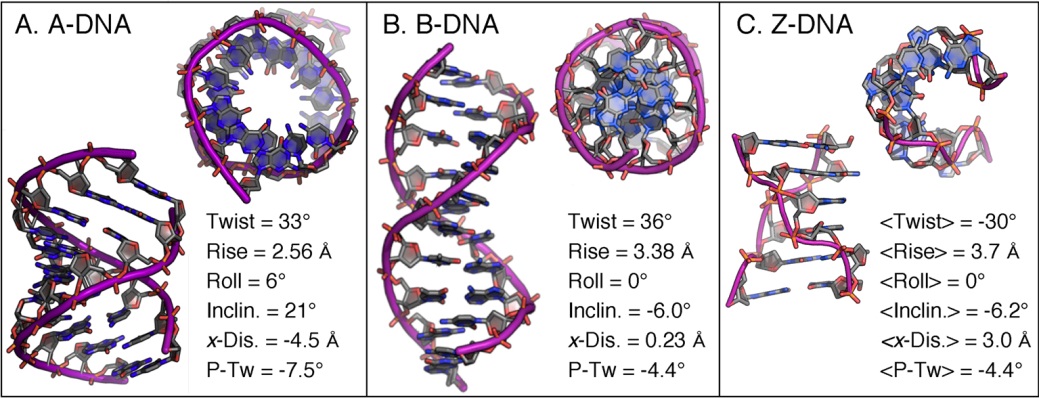CHEMISTRY OF NUCLEIC ACIDS: DNA REPLICATION AND DNA REPAIR #2
Welcome everyone on our last post we discussed about DNA, their primary and secondary structure and formation of phosphodiester bond. We need to know our genes and DNA, and we have known what is nucleotide acid which is the basic monomeric unit of nucleic acids. We also said there are two types which are DNA and RNA and talk about the Watson and crick model DNA can exist in several conformations depending upon the base composition and under different physical conditions. In all these conformations the same base pairing rules apply, changes do not alter the information content of the DNA. If you miss the first part here it is:
NUCLEIC ACID: DNA REPLICATION AND DNA REPAIR #1
The conformations of DNA have been determined by X-ray crystallography. By far the most common conformation is B-DNA.
1. B-DNA: The double helix of B-DNA has the following characteristics:
- Adjacent nucleotide in each chain are rotated by 34.60 relative to each other. Double helix completed one turn approximately every 10.40 base pairs.
- One turn of the double helix spans a distance of 3.4nm. This distance is the pitch of the helix. Each
By HYDROGEN BONDS BETWEEN (A) ADENINE AND THYMINE AND
(B) BETWEEN CYSTOSINE AND GUANINE
Base pair therefore increase the length of the double helix by 0.33 nm. · Diameter of the double helix is 2.37 nm.
2. A-DNA:
- When B-DNA crystals are dried or when salt content of the crystal is lowered, the long thin B-DNA molecule becomes short, stubby molecule and is called as A-DNA.
- The pitch of the helix of A-DNA is 2.46 nm, and number of base pairs per turn is about 11.
- A-DNA is not found under physiological conditions.
Note: In both A and B-DNA the sugar group and the base are on opposite sides of the glycosidic bond or in the “anti”-conformation. However, in the presence of high concentrations of cations some nucleotides will rotate into “syn” conformations. Under these conditions a strikingly different DNA conformations can exist. The chain Zig-Zags between syn and anti conformation and results in the Z-DNA (Z for Zig-zag).
3. Z-DNA
- Z-DNA is longer and thinner than B-DNA. It has left handed helix.
- One complete turn of Z-DNA has 12 base pairs, and the pitch of the double helix is 4.56 nm.
- The diameter of the double helix is 1.84 nm.
- The major groove in Z-DNA is no more a groove but a convex surface.
- The minor groove is a deep cleft that spirals around the structure.
THE MAJOR STURCUTURAL FEATURES OF A, B AND Z DNA
Note: within the cells, most of the DNA is B-DNA although regions rich in guanine and cytosine base pairs may assume Z-conformation.
Denaturation of DNA:
Two strands of DNA double helix can separate or unwind during processes such as DNA replication, RNA transcription and genetic recombination. Complete unwinding of DNA can take place in vitro and is called denaturation of DNA or it is known as “a helix to coil transition”. Denaturation occurs when the hydrogen bonds between bases break and the base pairs separate when DNA is treated above a certain temperature or melted. Temperature of DNA:
The temperature at which DNA is half denatured is called the melting temperature (Tm of DNA). At this temperature, the absorbance of DNA at 260 nm is increased by 18.5% i.e., half the 37% increase in absorbance where DNA is completely denatured. This phenomenon is called hyperchromicity or hyperchromic effect. The melting temperature of DNA is determined by its base composition. Since there are two hydrogen bonds between A and T while three between G and C increasing G-C base pairs raises Tm. Tm is strongly influenced by the base composition of the DNA.
- DNA rich in G-C pairs has a higher Tm than DNA with high proportion of A-T pairs.
- Mammalian DNA, which has about 40% G-C pairs, has a Tm of about 870C.
- The Tm of DNA extracted from different species and measure at pH 7 in an isotonic salt solution varies linearly with G-C content; with synthetic Poly-A-T having a Tm of about 650C and synthetic Poly G-C having a Tm of 1050C.
Annealing: Once the strands are separated, they a can be renatured. If a melted sample of DNA is slowly cooled, the absorbance of the solution decreases. This in indicative of complementary strands being paired again. This process is called as annealing. Annealing can occur only at a temperature below Tm of DNA which is about 700C.it sis fastest at 200C below Tm or 500C.
- Mitochondrial DNA: The proteins synthesized in cytoplasm by protein synthesizing apparatus cannot pass through the mitochondrial membrane. Hence for synthesizing the proteins of mitochondrial matrix and membrane, there is a second genetic system with DNA and RNAs in the mitochondrion itself. The mitochondrial DNA is also double stranded like nuclear DNA but it is circular.
- Satellite DNA: the highly repetitive sequence of chromosomal DNA when separated after isopycnic centrifugation Cscl after shearing the DNA into segments, the DNA distributes into a main band and a set of small strands termed “Satellite bands” of DNA. In humans four satellite DNAs constitute 6% of the chromosomal DNA.
Topic will be continued.
Thank you all for reading till next time.
References
- Dnastar.com: Annealing Temperature
- Ncbi.nlm.nih.gov: DNA conformations and their sequence preferences
- Wiki2.org: Satellite DNA
- Khanacademy.org: DNA as the genetic material
- Easybiologyclass.com: Different forms of DNA
- en.wikibooks.org: Structural Biochemistry/Nucleic Acid/DNA/DNA Denaturation
- Quora.com: Why are there two hydrogen bonds between adenine and thymine





Being A SteemStem Member
Hey man! Awesome post :)
I did my honours thesis on DNA repair mechanisms and they're such a pain to try and visualise. Thanks for the breakdown, great read :)
Thanks mate, dna is an interesting topic to discuss.